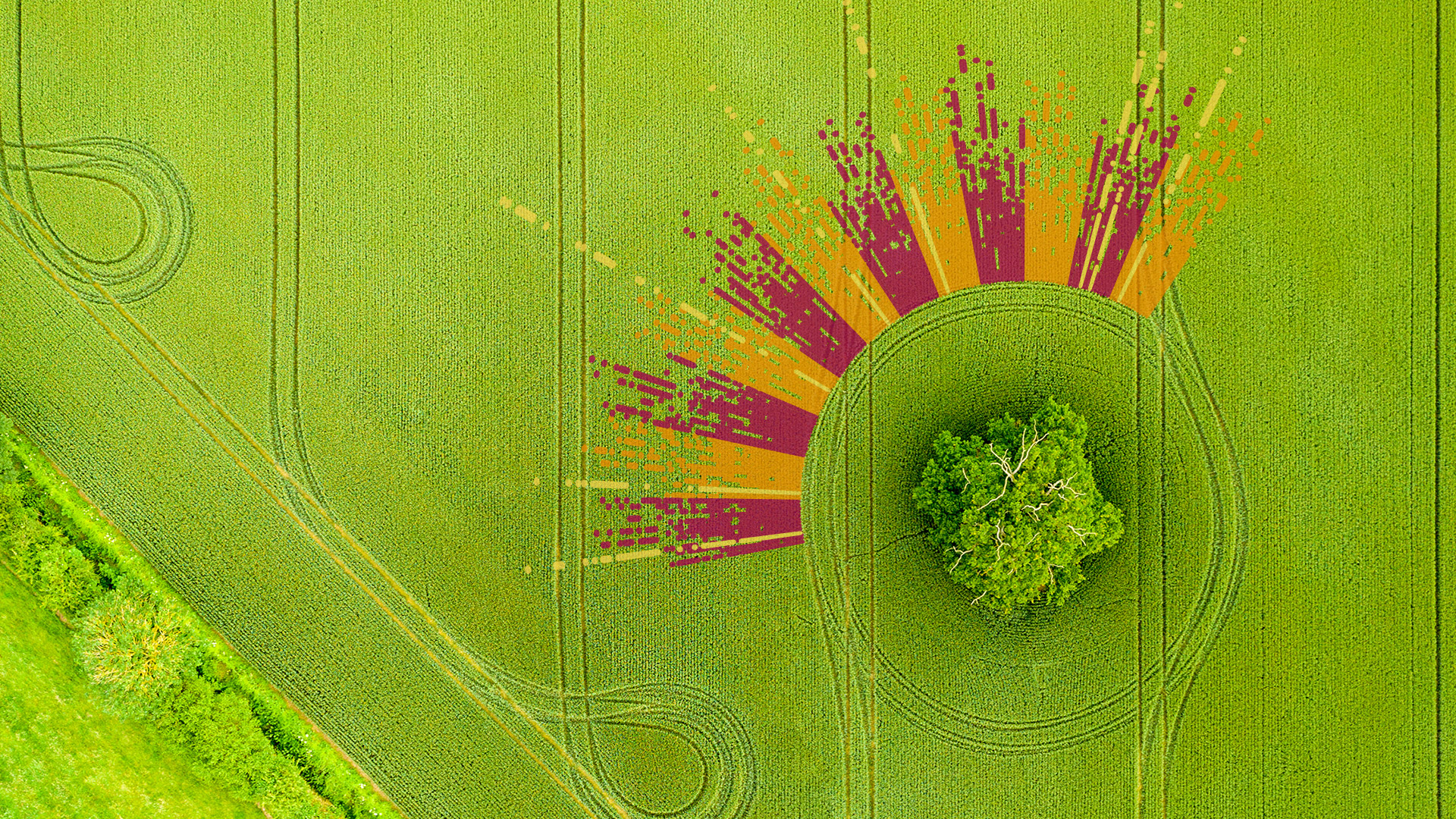



Epigentics: precise thinking
Nessa Carey of Synomics considers how epigenetics and the greater understanding of data can be used to support breeders and producers in ‘precision farming’.
Efficient production of food – whether it’s crops or animals – relies on two main features: producers try to select the genetic specimens that are best suited to particular environmental conditions.
It’s really just another version of the old ‘Nature plus Nurture’ paradigm, where Nature is represented by the DNA sequences in the genes, and Nurture by environmental stimuli of many types from irrigation levels to the amount of sunlight, and from seaweed in cattle feed to calcium levels in silage.
But have you ever wondered how genes and the environment communicate with each other? Why does winter barley need a period of cold before the genes that control flowering deign to wake up and start the process that leads to beautiful healthy grains?
It’s only really in the last few decades that scientists have begun to develop an understanding of what’s happening at a cellular level when organisms respond to their environment. It’s a field that’s incredibly complex and developing fast, and it has the potential to increase the efficiency of modern farming practices, increasing yield while minimising inputs.
 This field is called epigenetics. ‘Epi’ comes from Greek and means ‘as well as’, ‘in addition to’ or ‘on top of’. It refers to a whole level of information that’s quite literally deposited on top of DNA molecules, changing the way that genes are expressed.
This field is called epigenetics. ‘Epi’ comes from Greek and means ‘as well as’, ‘in addition to’ or ‘on top of’. It refers to a whole level of information that’s quite literally deposited on top of DNA molecules, changing the way that genes are expressed.
The easiest way to visualise this is if we think of DNA not as a blueprint or a template, but as a script. If you’ve ever seen two productions of the same play, you’ll know that they can look and sound completely different even though the two versions use the same words. During read-throughs and rehearsals, the director and cast will have annotated their scripts with pencil marks, Post-It notes, highlighter pens etc and used these notations as prompts for how to deliver their lines. It turns out that something similar is happening all the time to DNA in cells, in response to environmental signals. A huge range of tiny specific chemicals get added to DNA and the proteins that are associated with it. They never change the sequence of the genes (the original DNA ‘script’) but they instruct the cell to use those genes in different ways. This can include turning them on or off or pushing gene expression up or down (analogous to an actor shouting or whispering his/her lines).
A dynamic system
The great thing about epigenetics is that it’s a very dynamic system. DNA itself can’t change rapidly in response to the environment during the lifetime of an individual, be it a broad bean or a boar. But responding quickly is exactly what the epigenetic system has evolved to do, so it gives organisms a fighting chance when their environment changes, whether that’s a sudden decrease in rainfall or an equally sudden increase in salinity.
Because the system is dynamic, it also contains a degree of random flux. That may seem like a bad thing, but in terms of responding quickly to dynamic changes it’s actually incredibly useful. It means that in any population, whether of cells or individuals, there will always be some who are epigenetically better positioned than others to quickly make the additions to DNA that will allow that individual to roll with the environmental punches. It’s an inevitable consequence of an intrinsically noisy system.
Scientists actually recognised this randomness in biological systems about a hundred years ago. They realised that genetically identical mice, raised under identical laboratory conditions, varied in key aspects such as body weight. The researchers gave this phenomenon the name ‘intangible variation’ which sounded great but didn’t mean anything. But now we know that this intangible variation is actually a manifestation of the noise in the epigenetic system.
The impact on breeding
 How will we use our new information to help breeders and producers? Real-time monitoring of the pattern of epigenetic changes to the genetic material of crops and animals will act as a way of filling in the missing data that can’t be provided by genomics alone. We’ll be able to identify the individual plants and animals that are epigenetically better attuned to their environment and focus resources on those, whether in the greenhouse or in the barn. Nutrients can be directed to those who will benefit most, creating genuinely precision farming.
How will we use our new information to help breeders and producers? Real-time monitoring of the pattern of epigenetic changes to the genetic material of crops and animals will act as a way of filling in the missing data that can’t be provided by genomics alone. We’ll be able to identify the individual plants and animals that are epigenetically better attuned to their environment and focus resources on those, whether in the greenhouse or in the barn. Nutrients can be directed to those who will benefit most, creating genuinely precision farming.
The epigenetic system is incredibly responsive to the smallest changes in environmental conditions and can act as an early warning system to alert producers to the need for food supplements or other interventions before there are any detectable signs of physiological stress.
What’s standing between this appealing vision and its implementation? Basically, it’s data, and for once the problem isn’t that we don’t have enough, it’s that there’s a risk that there will be far more than most systems can handle.
Epigenetics is the Lego Technic to the Lego Duplo of genomics. That’s because DNA information is incredibly stable and consistent. Every cell in an individual organism has exactly the same DNA sequence as every other cell, and the sequence doesn’t change with time. Epigenetics is the complete opposite of this; the epigenetic signature varies enormously between cell types (it’s actually epigenetics that drives the process whereby you have different cell types even though they all contain the same genetic information) and in each cell it will vary depending on the precise environment.
Simple building blocks
DNA is also a really simple system – it’s made from just four building blocks (think four pieces of Lego all the same size and shape but in four colours) arranged in different sequences and the whole sequence can be analysed using just one technology. Epigenetics isn’t like that. There are many different kinds of modifications that can be added to DNA to change gene expression. If we over-extend our Lego analogy, it’s as if you’re building a model from Lego, Meccano, Sticklebriks (remember those?) and PlayDoh. The technologies to detect each type of modification have to be adapted to detect them all.
Genetic studies are often complicated by the fact that there may be several different DNA regions that all contribute to the final outcome. With epigenetics, you don’t only need to analyse the effects of different modifications in different regions of the genome, you also have to understand how the combinations of modifications at a single region influence the final read-out in terms of gene expression. And even once you have all that data, you need to understand what it means for the final phenotype.
This complexity potentially creates datasets that are orders of magnitude larger than those created from genetic information. It’s just too much data, and not enough actionable information.
This is where the Synomics platform is positioned to potentially transform how we use epigenetic information. The Synomics technology has already demonstrated that it can deconvolute genetic information with a speed and sensitivity never before achieved. This has been demonstrated in species as diverse as cassava and chickens. The next exciting challenge is to turn the power of this platform onto epigenetic data.
This is likely to happen in stepwise way – first identifying which are the key epigenetic modifications to monitor which really reflect and predict changes in phenotype, and then applying the technology in rapid readout situations that really change how a food producer can create the greatest synergies between Nature and Nurture.
It’s not here just yet. But we’re starting off down a very exciting track.
TheCattleSite News Desk


